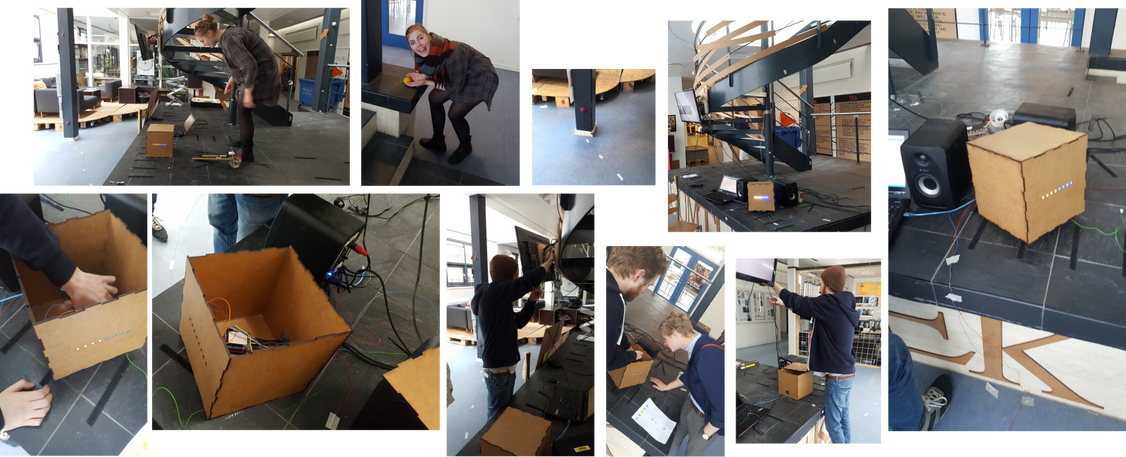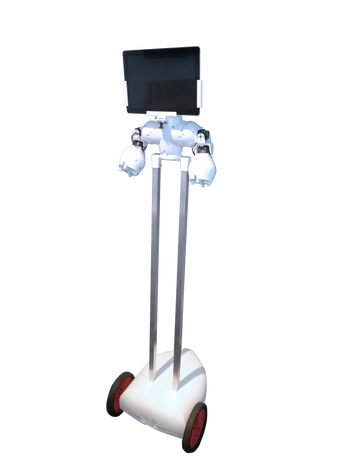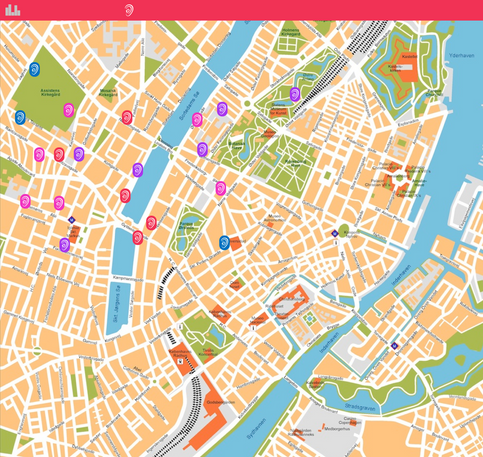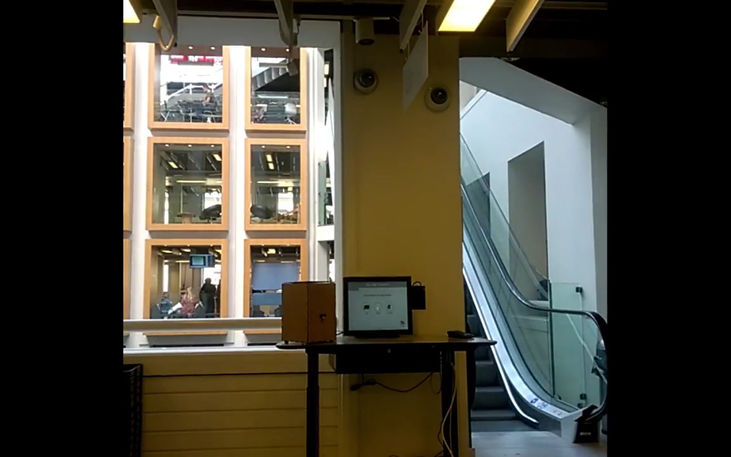Interactive Installation
A playful installation that explores social interaction through play at FDF National Camp 2016.
This installation gives the participants an opportunity to interact socially with each other and the surroundings of the installation. The purpose was to make it function as a tool, for social interaction between people.
The installation used a Touchsense-technology to create a more experimental interaction by using body contact to create a playful approach to play. This way the interaction became more than a human interacting with a machine and causing people to interact with each other.


Affective Telepresence
My Master thesis on developing a affective telepresence system for children with cancer in primary school.
For this project we collaborated with Shape Robotics - a danish company that has developed the modular robot, Fable.
In a study by Rigshospitalet, Shape Robotics had been commissioned to develop a telepresence robot for children with cancer in
primary school.
These children are facing social and educational challenges as a result of their absence from school, and our objective was to assist Shape Robotics in developing a telepresence system that creates a feeling of intimacy between the children and their school class.
It resulted in design suggestions that aims at supporting a more nuanced mediation of affective expressions through Fable - in order to create a true presence.
Feng Shui Machines
A way for designers to bring Feng Shui and technology together by (re)thinking and (re)designing the form of electronic artifacts challenging the western school of interaction design.
The project investigated how the eastern philosophy Feng Shui could be bridged together with the field of Interaction design (IxD) based on commonalities like how (changing) shapes and materials play a role in the temporal form of our electronic artifacts
To combine Feng Shui and IxD, we develop a framework for design which is mainly based on Feng Shui’s five elements: Metal, Water, Wood, Fire and Earth. The Elements interact with each other by supporting and canceling out each others energy.
Using the framework to design an object that transform from one shape to another would fit products with multiple purposes that need different energies.
In the end, we identified three potential products for redesign using our framework: A router, a phone charger and a radio.


ALEX: Advertisment AI
ALEX is an advertisement AI that uses data collection and facial recognition. It takes the form of whomever it is targeting and portrays the user in a way that seems more desirable to the user.
This project explores advertisement and tracking in public space. It is presented through a speculative design within a preferable future, inspired by the world we live in with advertisement following us wherever we go.
Everyone has their own opinions about ads, but one thing is for certain: They are not leaving anytime soon. Through our design we wanted to imagine what advertisement looks like in the future.
Interested in concepts of nudging and data tracking, we designed a future where advertisment is deeply personalized and challenges the idea of privacy.
Introducing ALEX: ‘Attentionate', 'Lively', 'Empathetic’, 'X' (the shared chromosome between men and women) is an AI used for targeted advertising. It analyzes its users’ needs through facial recognition, browsing history and social media patterns, becoming a part of the intelligent and personified city. It then takes the shape of the specific user and portrays itself in a way that said user might seem desirable.
AirTalk
A “Meet ‘N’ Talk” application, that works as a facilitator for uniting and starting conversations with strangers in airports.
This project focused on articulates the social seam in an airport, while creating a space for physical interaction.
Airports are usually a place with many people waiting hours before boarding a plane. The majority are spending this time avoiding strangers by looking at a phone or reading a book.
'AirTalk' was created to comment on the neglect of “face-to-face” communication and that everything now at days is happening online and in front of a screen.
As the project called for an phone-based solution, are 'AirTalk' designed with one purpose to forster face-to-face communication. This is done by only having two features: create or join a conversation.


YELL IT
A reflective self-tracking application that tracks your mood in public.
The focus of the project was to capture some aspect of life, and present it back to the user in some way.
As an opportunity to explore playfulness, usefulness and criticality, we designed ‘YELL IT’ a selftracking application, that inspired by a “sound monitor” tracks the users current mood, by recording user yelling into the phone.
We created ‘YELL IT’ to explore behavior in public, by daring the user to challenge the social norm and yell in public places. In this situation, we created a space, where you either attracts attention or go with the norm. This gives awareness so you can reflect on: where and when you are most angry?

Jumping Jack TV
In order to be PASSIVE (watch TV),
you have to be ACTIVE (do jumping jacks) !
The project of 'Jumping Jack TV’ resulted in a prototype build out of a cardboard TV with LED lights to illustrate when the TV is on/off. In it, was an Arduino that read the acceleration of an accelerometer inside a sweatband. In order of turning the TV on, the user should wear the sweatband and work out...
‘Jumping Jack TV’ illustrates a matter of concern about being too lazy. The goal of this project was to challenge how we interact with everyday things like watching TV, and by mapping a physical activity to a passive situation, we reflect on how we normally do things.
Trolibox
A useless, but "living" box of mystery that attracts curiosity in children.
This project introduces a Mystery Box to prove the importance of context, when a design wants to wake curiosity in the target groups.
'Trolibox' was a Mystery Box designed to attract interest, after which we could investigate the audience's curiosity level.
Inspired by 'The Most Useless Machine' we wanted to create a machine that did not have a particular useful purpose, but could envoke curiosity in people then activated. Through a simple sensor the box senses when people walk by and to simulate a living creature a teddybear pops out from the box just to go back in.
While the results were inconclusive, it did create curiosity with children, who wanted to learn more about "the creature in the box".









































































